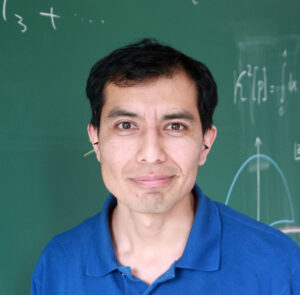Fellow, affiliation:
10/2022-09/2024: Laboratoire de Physique des 2 Infinis Irène Joliot-Curie (IJC Lab), Orsay France
10/2024-09/2025: Center for Particle Physics Siegen (CPPS), Uni Siegen
Explorations into B meson phenomenology through collider synergies

Dr. Gilberto Tetlamatzi-Xolocotzi
Our current description of the subatomic world is given in terms of the Standard Model of particle physics (SM). As a matter of fact the theoretical predictions of the SM have shown an amazing agreement with the experimental measurements. However, there are open problems that the SM cannot address such as the nature of Dark matter. Thus, there are strong hints that this framework has to be extended by introducing new particles and interactions. The search for New Physics (NP) follows two paths, the first one are direct searches, which attempt to create NP particles on-shell in colliders. However, the mass of the new states produced is limited by the energy that these machines can attain. This severe limitation is circumvented in heavy quark flavour physics. Indeed,
B-meson decay signals are exquisitely sensitive to virtual particles far heavier than what the LHC can create. Here Beyond-the-SM physics (BSM) is identified through deviations between theoretical and experimental determinations of optimized observables. The aim of this proposal is to take advantage of the interplay between B meson physics and high energy collider studies towards the search for NP. Currently, several experimental results in B meson studies deviate from the predictions of our theoretical models and hence may imply the presence of new particles or forces. Therefore, it becomes crucial to cross-check the implications of these effects in high energy physics. This research program provides a set of studies aimed to bring new insights into current puzzles in hadronic processes where current discrepancies between theory and experiment suggest potential NP effects or critical problems with our calculation tools. In addition, it intends to motivate the search for NP using specific B meson leptonic channels, specifically the process where a B meson decays into pairs of electrons whose measurement in foreseeable experimental facilities can only be an indication of BSM. Moreover, it also aims to search for the decay process of a B meson into pairs of tau leptons prompting the usage of methods tested in high energy collider analyses to support these investigations.
